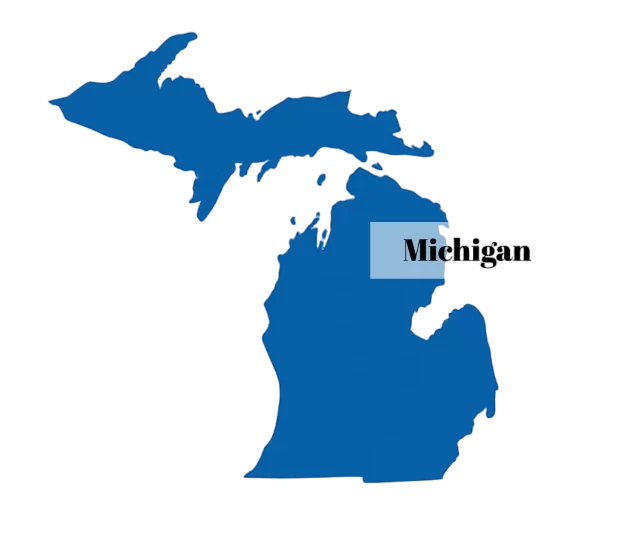Knowing Medicaid: A Complete Guide to Eligibility and Application Medicaid is an essential program that offers health coverage to millions of Americans, especially those who are elderly, disabled, or have low incomes. It can be intimidating to fully comprehend Medicaid, particularly when it comes to eligibility requirements and application procedures. This article will discuss a number of Medicaid-related topics, such as eligibility requirements, income and asset limits, & unique situations that may impact eligibility. A federal and state program called Medicaid was created to give health coverage to people and families with low incomes and resources.
Key Takeaways
- Medicaid is a government program that provides health coverage to low-income individuals and families.
- Eligibility for Medicaid is based on income, household size, disability, family status, and other factors.
- Income requirements for Medicaid eligibility vary by state and are based on the Federal Poverty Level (FPL).
- Asset limits for Medicaid eligibility also vary by state and may include limits on cash, bank accounts, and property.
- Medicaid eligibility is available for children, pregnant women, the elderly, disabled individuals, low-income adults, and individuals with special circumstances.
Medicaid, which was first created in 1965 as a component of the Social Security Act, has developed into an essential safety net for millions of Americans. Numerous health services are covered by the program, such as doctor visits, hospital stays, long-term care, preventive care, and more. Medicaid is administered differently in each state, with unique rules and regulations that may result in differences in eligibility requirements and coverage. The federal government provides a large amount of the program’s funding, which is shared by the federal government & each state.
Through this collaboration, states can modify their Medicaid programs to satisfy the particular requirements of their populations while still following federal regulations. Medicaid thus plays a vital role in guaranteeing that vulnerable groups can obtain the medical care they require. low-income demographics. Medicaid is generally available to low-income individuals & families, pregnant women, adults with disabilities, children, and the elderly. State-specific requirements.
Medicaid eligibility is determined by a unique set of rules in each state. A few examples of these rules are household size, income levels, and particular situations like pregnancy or disability. An extension of Medicaid under the Affordable Care Act.
| Category | Metrics |
|---|---|
| Income Eligibility | Percentage of Federal Poverty Level (FPL) |
| Asset Eligibility | Maximum allowable assets |
| Eligibility Groups | Children, Pregnant Women, Parents, Seniors, and People with Disabilities |
| Application Process | Online, In-person, Phone |
In many states, the Affordable Care Act (ACA) has increased Medicaid eligibility, making coverage available to people with incomes up to 138% of the federal poverty level (FPL). There are differences in access to care nationwide as a result of some states not choosing to implement this expansion. The federal poverty level, or FPL, is the main source of income requirements for Medicaid eligibility and is revised yearly.
The FPL is a benchmark for determining eligibility for different assistance programs and varies based on household size. People with incomes up to 138% of the FPL may be eligible for coverage in states that have expanded Medicaid under the Affordable Care Act. For instance, the FPL for an individual is roughly $13,590 per year as of 2023.
Consequently, in states where Medicaid has been expanded, a person making up to $18,754 would qualify for the program. Eligibility requirements, however, may be more stringent in non-expansion states, frequently requiring people to meet additional requirements or fall below 100% of the FPL.
The fact that income is not the sole determinant of Medicaid eligibility should not be overlooked.
When assessing eligibility, states may also consider additional revenue streams like child support, unemployment insurance, and Social Security benefits. In addition to income requirements, Medicaid has state-specific asset limits. These restrictions are meant to make sure that people who are eligible for aid do not possess an excessive amount of resources. For instance, many states have asset limits of $2,000 for individuals and $3,000 for couples.
In general, asset limits are set at relatively low thresholds. Usually, cash savings, stocks, bonds, & real estate (apart from the primary residence) are taken into account when calculating assets. Some assets, however, are frequently not taken into account.
For example, if a person resides in their primary residence or plans to return there after a brief absence, it might not be included in asset calculations. It is essential that those looking for Medicaid coverage comprehend these asset limits. Planning ahead and understanding which assets may impact eligibility are crucial before submitting an application. Medicaid offers crucial coverage to pregnant women and children through programs tailored to their needs. Medicaid and the Children’s Health Insurance Program (CHIP) may be available to children from families earning up to 200 percent of the Federal poverty level in a number of states.
Children will receive the medical care they require without putting an excessive financial strain on their families thanks to this. Many states have extended Medicaid coverage for expectant mothers. Generally speaking, pregnant women who earn up to 138% of the FPL are eligible for Medicaid. Prenatal care, labor & delivery services, & postpartum care are all covered. Access to healthcare during pregnancy is essential for the health of the mother and the unborn child.
Programs to improve maternal health by offering comprehensive support services beyond medical care have also been put in place in a number of states. Nutrition education, mental health support, and help accessing community resources are frequently included in these programs. senior long-term care services. Medicaid can be a lifeline for adults 65 and older or people with disabilities who need long-term care services, like home health or nursing home care.
Like other groups, elderly people’s eligibility frequently depends on their income and asset limits. Care at Home and in the Community. Instead of providing care in institutions, many states provide special programs or waivers that let seniors receive care in their homes or communities. In addition to encouraging independence, this strategy frequently leads to improved health outcomes.
assistance to people with disabilities. Medicaid offers vital assistance for people with disabilities, including mental health support, rehabilitation services, & personal care assistance. The program acknowledges that in order to preserve their health & well-being, people with disabilities might need extra resources.
A sizable percentage of Medicaid beneficiaries are adults with low incomes. Many states have expanded eligibility requirements under the ACA’s expansion provisions to cover adults between the ages of 19 and 64 with incomes up to 138% of the FPL. Millions of adults without insurance now have access to necessary medical care thanks to this expansion. The eligibility requirements for low-income adults may be more stringent in states that chose not to expand Medicaid under the Affordable Care Act.
To be eligible for coverage, they frequently need to fulfill certain requirements pertaining to their disability or caregiving duties. When seeking help, it’s critical to comprehend state-specific laws, as this disparity emphasizes. Adults with low incomes may find it especially difficult to access healthcare due to obstacles like lack of knowledge about available resources or transportation problems. In order to inform these people of their options & assist them with the application process, community outreach initiatives are essential. Medicaid eligibility requires applicants to fulfill certain residency & citizenship requirements.
In general, people have to be U. A. citizens or lawful residents in order to qualify for coverage. This criterion makes sure that people who have developed relationships within the nation receive the majority of the public funds.
Documentation attesting to citizenship or immigration status may be required by the state during the application procedure. Generally speaking, passports, immigration documents, and birth certificates are acceptable forms of documentation. Applicants must also be residents of the state in which they are requesting Medicaid benefits; hence, they must present documentation of their residency, such as utility bills or lease agreements. For some groups—like undocumented immigrants—who might not have access to Medicaid despite needing medical care, these requirements can occasionally present difficulties.
Medicaid applications can initially seem overwhelming, but they can be made more manageable by being aware of the procedure. People can apply online via the Medicaid website of their state or in person at application-processing offices. Also, many states allow people to apply by mail or over the phone. Getting the required paperwork together in advance is crucial when applying for Medicaid.
These could include identification documents (such as a driver’s license or Social Security card), proof of residency (such as utility bills), asset information (bank statements), & proof of income (such as pay stubs). Applications can be processed more quickly if these documents are available. Applications are examined by state representatives after they are submitted, and they will decide eligibility based on asset and income limits as well as other program-specific requirements.
Within a predetermined period, applicants will be notified of their eligibility status. A person’s eligibility for Medicaid coverage may be impacted by particular circumstances. People who are homeless or recently released from prison, for instance, might face more difficulties when applying for benefits.
Numerous states have initiatives created especially to help these groups obtain medical care. Also, Medicaid offers specialized programs that offer improved support services catered to the needs of people with complex medical needs or chronic illnesses. Through navigating the intricacies of the healthcare system, these programs seek to guarantee that vulnerable populations receive comprehensive care. For both applicants and advocates representing those in need, it is essential to comprehend these unique situations.
People can apply more effectively if they are aware of the programs and resources that are available and catered to their particular needs. Despite its significance as a healthcare safety net program, the general public still has a number of misconceptions regarding Medicaid eligibility.
One widespread misconception is that Medicaid is only available to those who are unemployed or in poverty, but this is untrue.
Numerous low-income working people are also eligible for coverage under a number of state programs. Another myth that isn’t always true is that losing assets or property is a guaranteed consequence of applying for Medicaid.
Despite the existence of asset limits, many necessary assets—like a primary residence—are frequently overlooked when determining eligibility. The last misconception is that once a person qualifies for Medicaid benefits, they cannot change their situation without losing their coverage. This is also untrue. At any time, people can report adjustments to their household size or income that might have an impact on their eligibility status. By dispelling these myths, more people will be inspired to seek out essential healthcare services fearlessly and without hesitation. — To sum up, Medicaid can be complicated, but it is important to comprehend its eligibility requirements in order to obtain necessary medical care.
It can make a huge difference to know your rights & the resources that are available to you, whether you are an elderly person looking for long-term care options or a low-income adult looking for coverage options under the ACA expansion provisions. Consider contacting Rockaway Home Care if you or a loved one needs compassionate home care services in New York. Dedicated to offering support that improves quality of life while guaranteeing peace of mind for families, Rockaway Home Care has over 20 years of experience providing high-quality home care solutions customized to meet individual needs.
FAQs
What is Medicaid?
Medicaid is a joint federal and state program that provides health coverage to low-income individuals, families, and children, as well as people with disabilities.
How do I know if I’m eligible for Medicaid?
Eligibility for Medicaid is based on income, household size, disability status, and other factors. Each state has its own specific eligibility criteria, so it’s important to check with your state’s Medicaid office or visit the official Medicaid website for more information.
What are the income requirements for Medicaid eligibility?
Income requirements for Medicaid eligibility vary by state and are based on the Federal Poverty Level (FPL). In general, individuals and families with incomes at or below 138% of the FPL may be eligible for Medicaid under the Affordable Care Act.
Are there other eligibility requirements for Medicaid?
In addition to income requirements, eligibility for Medicaid may also be based on factors such as age, disability status, pregnancy, and immigration status. Each state has its own specific eligibility criteria, so it’s important to check with your state’s Medicaid office for more information.
What if I’m not eligible for Medicaid?
If you are not eligible for Medicaid, you may still be able to get health coverage through the Health Insurance Marketplace or through other state or local programs. It’s important to explore all of your options for health coverage.




